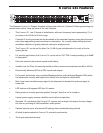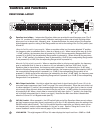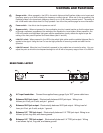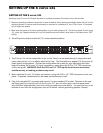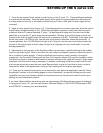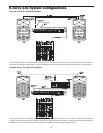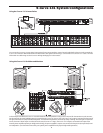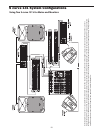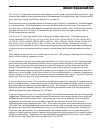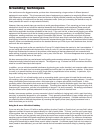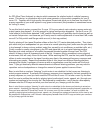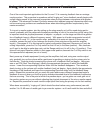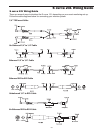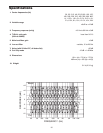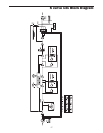
11
The S curve 131 gives you fine control over shaping a sound, using a process called equalization. But
there are few areas of sound engineering more misunderstood than equalization, and, just as good EQ
can really help a sound, bad EQ can really hurt it, so read on...
Every naturally occurring sound consists of a broad range of pitches, or frequencies, combined togeth-
er in a unique way. This blend is what gives every sound its distinctive tonal color. The range of fre-
quencies that can be heard by humans is sometimes called the audible range, and it includes frequen-
cies from as low as 20 Hz (that is, 20 wavecycles per second) to those as high as 20 kHz (that is,
20,000 wavecycles per second).
The S curve 131 uses high-quality filters, dividing the audible range into 31, 1/3 octave frequency
areas, centered at 20 Hz, 25 Hz, 31.5 Hz, 40 Hz, 50 Hz, 63 Hz, 80 Hz,100 Hz, 125 Hz, 160 Hz, 200
Hz, 250 Hz, 315 Hz, 400 Hz, 500 Hz, 630 Hz, 800 Hz, 1 kHz, 1.25 kHz, 1.6 kHz, 2 kHz, 2.5 kHz, 3.15
kHz, 4 kHz, 5 kHz, 6.3 kHz, 8 kHz 10 kHz, 12.5 kHz and 16 kHz, 20 kHz “Constant Q” circuitry
ensures that the bandwidth of each of these frequency areas stays the same even when approaching
maximum boost or attenuation resulting in greatly reduced phase shifting and intermodulation distor-
tion.
Each frequency area can be cut or boosted by as much as 12 dB, giving you finer control and allowing
you to construct gentler frequency curves.
In most instances, the best way to approach equalization is to think in terms of which frequency areas
you need to attenuate, as opposed to which ones you need to boost (boosting a frequency area also
has the effect of boosting the overall signal; too much EQ boost can actually cause overload). Be
aware of the phenomenon of masking, where loud sounds in one frequency range obscure softer
sounds in the same range; by cutting EQ “notches” in a loud signal, you can actually make room for a
softer one to shine through. And try not to think of EQ as a miracle worker—no amount of equalization
can put a singer in tune or remove the distortion from an overloaded input signal! The key is to get the
signal right in the first place, by using correct gain structure and mic placement.
If you are using your S curve 131 to equalize a complex mono signal (for example, the master mix out-
put of a mixing console), a more natural sound can be obtained by setting up gentle “smile” curves than
by simply cutting or boosting individual frequency areas. For example, if you decide that you want to
boost one particular frequency area by 6 dB, try boosting the adjacent areas (the frequency directly
above and below the target frequency) by 3 dB each.
If you are using your S curve 131 to equalize signal from individual instruments, here are a few general
suggestions: Boosting the low frequency areas of instruments such as bass drums or bass guitar will
add warmth and make the sound “fatter”; conversely, you may want to attenuate the low frequency
components of instruments such as cymbals, high-hats, and shakers so as to “thin” them out.
Attenuating mid-range frequencies (the 1 kHz - 5 kHz area) can give a vocal performance more of an
“FM-radio” feel, while boosting those frequencies can help a vocal cut through dense instrumentation.
Be careful not to boost high frequencies too much or you risk adding hiss to the signal, though just a
touch can help add “shimmer” to an acoustic guitar, ride cymbal, or high-hat. You can also use the
highest or lowest equalizer sliders to reduce hiss (by attenuating high frequencies) or rumble (by atten-
uating low frequencies). Rumble can also be attenuated by engaging the front panel Low Cut switch,
which inserts a High Pass Filter that is variable from 15 to 200 Hz.
About Equalization



